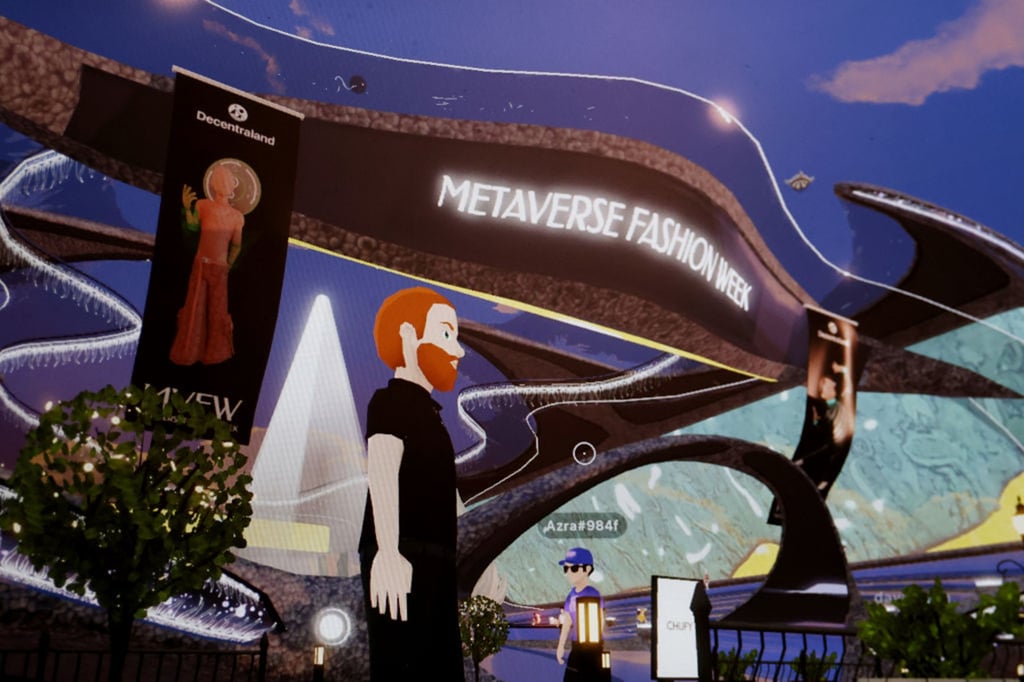The Metaverse, first coined by Neal Stephenson in his 1992 sci-fi masterpiece “Snowcrash”, has taken the world by storm. Originally intended to be a sinister prediction of our future as an internet-based society, the term ‘Metaverse’ has since been adopted (ironically) by Mark Zuckerberg for the creation of his brainchild Meta, formerly known as Facebook.

The popularity of the Metaverse has skyrocketed since its debut in 2021. | @financemonthly
What is the Metaverse?
According to Zuckerberg, he was inspired by science fiction novels like “Snowcrash” to create a VR (virtual reality) version of the internet. He wanted to create a world that will be able to sustain a more powerful economy and where people can engage in physically and emotionally rewarding communities, which will eventually lead to self-sufficient ecosystems.
Metaverse Fashion Week to celebrate VR fashion. | @cityam
However, this new and exciting concept is far from complete. The Metaverse claims to eventually allow us to extend our senses into the digital world, mixing the virtual with reality constantly by engaging with 3D territories. But who exactly designs the Metaverse?
The Rise of the Meta-Architect

The rise of the Metaverse prompts a new form of architecture.| @rethinkingthefuture
Just like in the real world, architects play a crucial role in the building of virtual projects in the Metaverse. If the Metaverse was created to emulate reality, then people need spaces to exist in, and that calls for the work of designers and architects. However, due to the limitless possibilities in the Metaverse (gravity who?), the need for a Metaverse-specialized architect may arise, drawing a tense line between traditional architects and Meta-architects.
One key difference would be that although traditional architects still significantly have a hand in designing physical spaces that provide a place for society to conduct our daily activities while sheltering us, Meta-architects are more involved in designing physically impossible buildings that focus on visuals and shapes.
NFTs and Architecture

You can now buy and sell land virtually in the Metaverse. | @generationt
Architect firms have also hopped on the NFT (Non-fungible tokens) train, where companies are increasingly involved in developing digital assets with soaring values due to their scarcity, just like how regular assets are. VR based platforms such as Decentraland, which sells plots of virtual land in the Metaverse for buyers to own and build using their in-game cryptocurrency ‘Mana’, are spearheading a new virtual real-estate trade. As such, demand for Meta-architects to work in such virtual platforms has skyrocketed beyond supply, resulting in a novel opportunity for architects to develop VR building skills to engage with this new reality.
Designing the Metaverse
Creativity is key when you’re a Meta-architect. Just like how the process of designing a space works, designing a space or building in the Metaverse requires the typical starting brief from a client, followed by a draft of the design before the concept is accepted and made into a reality. Although there is no need for engineers to physically build a concept in the Metaverse, developers are crucial in order to check for the interactive capabilities of the design, such as whether the door makes a sound when it’s opened, or if the windows can open up to the Metaverse world.

Architects get a chance to be creative in the Metaverse. | @newyorkmagazine
Currently, companies are merely recreating real buildings virtually in the Metaverse, much like the case of BMW and Amazon. But we can expect to see extra-experimental buildings in the future when meta-architects race to be the forefront of novel buildings. Exciting right?
What Could Go Wrong?
A lot.
With the potential for a good deal of social, political, and environmental issues, the Metaverse needs to step up in order to provide a safe environment for architects and people in general to explore and work. Traditional architects would be pressured to reskill to learn how the Metaverse platforms work, pick up coding, and actively free themselves from the building constraints of the real world.

Architects have to reskill in order to meet rising demand.
Considering the Metaverse’s impact on the environment, the soaring consumption of electricity will lead to more network traffic and data processing. However, it should not be ignored that carbon emissions can be greatly reduced if we spend more time and resources on the virtual world.
The increased presence in the Metaverse can also have some dire effects on humans. There is a possibility for a mass disengagement from reality that society could have when constantly fed with virtual spaces and information, which can be worrying for the progress of humankind.
Privacy and security issues are also a concern. Without rules and regulations in the Metaverse, heinous crimes like theft, sexual harassment, and hate speech can become normalized. While architects and meta-architects are not responsible for the law, it is important for them to take note of how the space they designed can perpetuate an unsafe environment for everyone.
Building a Bridge Between the Real and the Virtual

The Metaverse can finally connect the virtual and the reality.
The debate over the responsibility of designers, architects, and meta-architects in unifying reality and virtual reality is still in its early stages and is slated to continue to evolve as breakthroughs occur in the field. Although this new leap into the unknown can be anxiety-inducing to some or even downright scary for others, architects around the world should seize this opportunity if they can. As an industry that is capable of paving the way for the standards set in the Metaverse, it is better to embrace this new platform than to ignore it.











